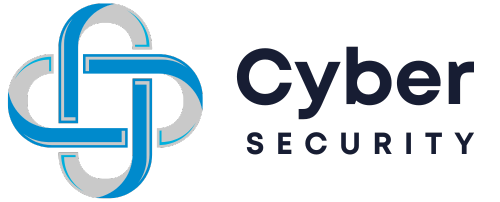What Self Questions to Consider When Developing a New Cybersecurity Software Solution for Your Company?
While it’s a good idea to get a cybersecurity software system developed for your business; in the age of digital, it is a necessity. Cyber threats are evolving and so is the need for securing your defenses. But before you embark on your mission to develop a cybersecurity software system, it’s important to start with a few basic questions that will help ensure your system will be effective, scalable, and secure. Harnessing the potential of Artificial Intelligence (AI) can fuel your system with even more powerful features. Here’s what you should know:
1. Determine Your Business’ Primary Cybersecurity Needs
Each business is unique, and so are its cybersecurity needs. Now, before you start building a software system, ask yourself:
- Which data is most sensitive and needs protection?
- Examples include customer data, financial records, intellectual property and proprietary algorithms.
- What are the potential threats to my business?
- Is it more likely to be a phishing attack, a ransomware, an insider threat or a Distributed Denial-of-Service (DDoS) attack?
- What do I need to do to comply?
- Are there regulations specific to your industry (GDPR, HIPAA, PCI-DSS) that your cybersecurity system must comply with?
Identifying your specific requirements will guide you in building a system that solves your company’s unique problems.
2. AI and Cybersecurity: How Can You Make the Most of It?
Cyber24 — Introducing the role of Artificial Intelligence in cybersecurity Consider:
- How will artificial intelligence help with threat Detection?
- AI-enabled tools can scour through terabytes of data and pinpoint patterns that could indicate an attack. This system enables your threat detection to capture things that a manual system would otherwise not see.
- 25:53 — Example of AI in system protection against threats.
- AI allows an automated response to a threat, like isolating compromised systems or blocking IP addresses, minimizing the time to be compensated for attacks.
- How will AI respond to new threats?
- The when you have natural language processing capable of learning information and adapting itself as per your previous incidents, It’ll easily outstand any the advanced threats in the world that’s created.
3. How Much Do I Want to Spend and How Long Do I Have to Build?
The building of a cybersecurity software system is an enormous investment of both time and resources. Key questions include:
- What is the budget for this project?
- Account for the costs related to developing, implementing, and maintaining the proposal.
- How quickly do I want the system up and running?
- Set achievable timelines for each phases that include design, development, testing, and deployment phase.
- Do I require third-party help?
- You might want to consult with cybersecurity experts or work with seasoned developers to expedite these changes.
4. How Scalable Should My Cybersecurity Solution Be?
Your cybersecurity needs will grow as your business grows. Ask if your system can scale when Further requirements emerge:
- Is the system scalable – can it handle bigger data?
- Your cybersecurity solution should be scalable enough to handle bigger datasets as your enterprise grows.
- Does it enable new technologies to thrive?
- Be ensure that it is compatible with emerging technologies, including IoT devices, cloud platforms, and AI-driven tools.
- How easy is it to integrate it with other systems?
- A scalable system should integrate smoothly with your current and future environment.
5. What steps should be taken to maintain data privacy and ensure compliance?
Safeguarding sensitive information and complying with regulations are top priorities. Ask yourself:
- How will system encrypt sensitive data?
- One of the core functionalities should be data encryption to protect information at rest and during transmission.
- What will be the access control measures?
- Create role-based access so that only certain individuals can access sensitive systems and data.
- How will compliance obligations be monitored?
- Have tools in place to monitor compliance with relevant regulations and provide audit-ready reports when needed.
6. What Are My Contingency Plans — for Cyber Incidents?
Even the most effective cybersecurity systems can fail. Think about how you will respond if there is a breach:
- What’s my incident response plan?
- Create a plan so your business knows how to detect, contain and recover from cyberattacks.
- What redundancy is built into the system for disaster recovery?
- Implement data backup and restoration capabilities to minimize downtime and data loss in case of an attack.
- Continue to develop staff needs training.
- Prepare your workforce to identify and respond to cybersecurity threats.
7. What Web3 Metrics Will Assess The System’s Success?
It is not a one-time project to build a cybersecurity system — it needs to be continually evaluated and improved. Ask:
- How will I gauge the effectiveness of the system?
- Use metrics like the number of threats detected, response times, and downtime prevented to measure performance.
- What feedback loops will you have in place?
- All above, with mechanisms to realize with real-life experiences from users.
- How frequently will the system be updated?
- Frequent updates are essential to patch new vulnerabilities and enhance functionality.
8. How Do I Future-Proof Cybersecurity Software?
Of course, security is an ever-moving and evolving target and so it is critical to build a system that is able to adapt as time goes by. Consider:
- What are the new threats I should be getting ready for?
- Follow emerging threats such as quantum computing, deepfake attacks and sophisticated AI-enabled threats.
- The goal is to make the state-of-the-art a little more user-friendly without compromising on innovation.
- Build your software in a modular way so that parts can be updated or replaced independently without having to rework the whole damn thing.
- What alliances can fuel continual evolution?
- Work with AI researchers, cybersecurity experts and technology providers to ensure you are ahead of the curve.
Conclusion
Developing a cybersecurity software system for your organization is a challenging but fulfilling process. In doing so at the project outset, you can make sure that your environment meets your specific needs, is designed for the future, and supports the latest AI-driven technologies.
Cybersecurity isn’t merely a technical problem — it is a strategic investment towards the continued success and security of your business. We can help you design and implement a system that protects your assets while enabling your growth in the digital landscape that surrounds us today.
“So access now!” Get started and secure your future with ease!

